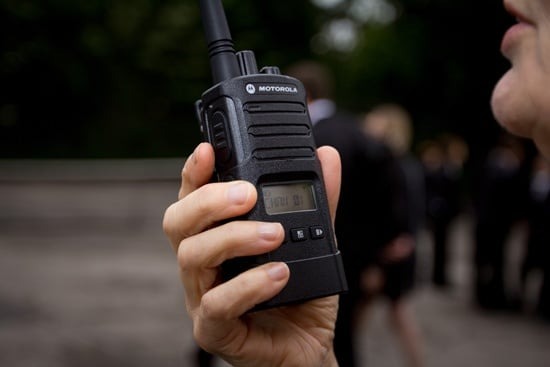The foreman shouts over the roar of machinery.
The driver checks his phone at a red light, trying to answer a text from dispatch.
The event manager waves frantically, hoping someone notices.
Three different worlds—construction, transportation, and live events. But all share the same problem: communication that’s too slow, too messy, or too unreliable when it matters most.
That’s where modern two-way radios step in. Built for instant connection, they bridge the gap between the road, the job site, and everywhere in between.
Phones Are Smart. Radios Are Faster.
Let’s get this out of the way: phones are incredible. They do everything. But “everything” isn’t always what you need in the middle of a shift.
Unlock, scroll, dial, wait. That’s the phone routine. Radios cut through the clutter: push, talk, done. The difference between a delayed update and an immediate one can be the difference between safety and risk—or between making a deadline and missing it.
The Road: Keeping Fleets Connected
Truck drivers, delivery vans, shuttle services—life on the road depends on updates that can’t wait.
Two-way radios let drivers and dispatchers talk instantly, without worrying about dropped calls or text messages delayed in dead zones. Nationwide push-to-talk options mean your team in Georgia can connect with drivers in Colorado like they’re next door.
And because radios are purpose-built, they don’t distract drivers with notifications, apps, or endless pings. Just one button, one channel, one clear voice.
The Job Site: Cutting Through the Noise
Construction sites are loud, chaotic, and constantly moving. Yelling instructions across the site isn’t just inefficient—it’s dangerous.
With radios, foremen, crews, and safety officers stay connected without leaving their posts. Instant communication means fewer delays, quicker decisions, and a safer working environment.
Even better? Radios are built for abuse. Dust, rain, accidental drops—they keep working long after a fragile phone screen would’ve shattered.
Events: Coordinating the Chaos
If you’ve ever tried to organize a concert, festival, or even a school fundraiser, you know it’s basically controlled chaos. Staff are scattered, crowds are unpredictable, and timing is everything.
Two-way radios turn that chaos into coordination. Need security at Gate B? Push the button. Need more chairs in the VIP tent? Push again. One device connects the entire team instantly—no endless group texts, no “where are you?” calls.
Why Radios Outperform Phones (Especially for Work)
Phones are generalists. Radios are specialists. And in mission-critical environments, specialists win.
- Reliability: Radios don’t need strong cell coverage or crowded Wi-Fi networks.
- Durability: They’re made to survive dust, drops, and downpours.
- Battery life: Many models last 12–18 hours—long enough to cover shifts without recharging.
- Group talk: One-to-many communication saves time compared to calling each person individually.
- Focus: No apps, no distractions—just work.
It’s not that radios replace phones entirely. It’s that they do one job better than phones ever will: instant, reliable voice communication.
Modern Features Without the Complexity
Today’s radios aren’t stuck in the analog past. They combine the simplicity of push-to-talk with advanced tools that matter for modern teams:
- Nationwide LTE coverage for coast-to-coast connection.
- Encrypted channels to keep conversations private.
- GPS tracking for accountability and safety.
- Hands-free accessories for drivers and active crews.
The setup is still simple. Turn it on, pick a channel, push to talk. The tech works in the background—no training manuals required.
Final Thought: Connection Without Complication
From highways to hardhats to high-energy events, the lesson is the same: the faster you can talk, the better you can work.
Two-way radios cut the noise—literally and figuratively. They deliver instant communication without contracts, apps, or distractions.
So whether you’re managing a convoy, leading a crew, or wrangling a crowd, one button is all it takes to keep your team on the same page.
And when the job is on the line, isn’t that the kind of connection you really want?

